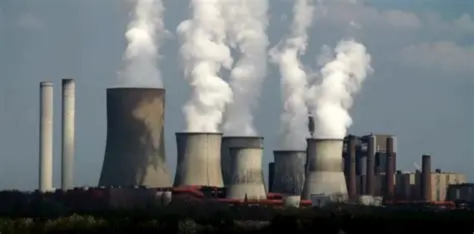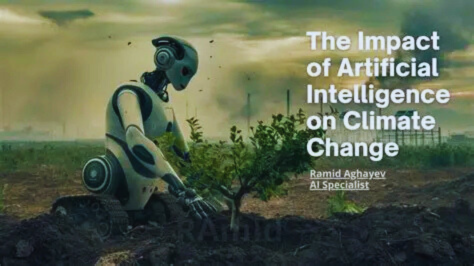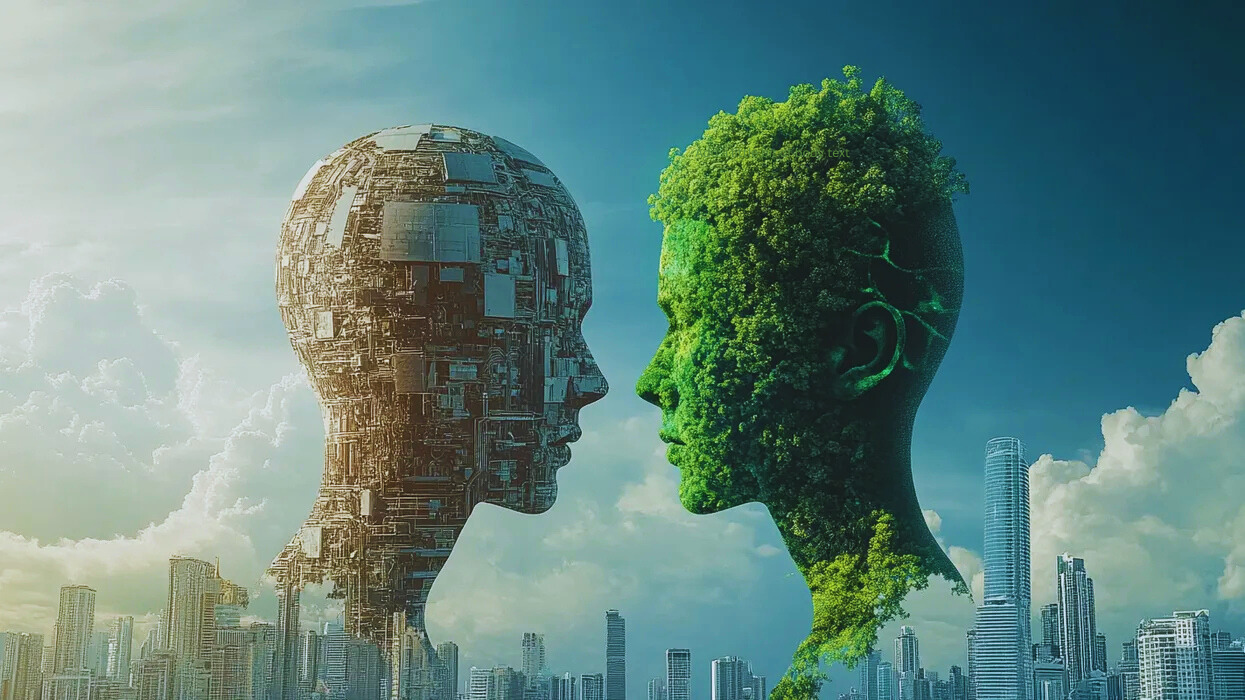Is AI Bad for The Environment ?
As AI technology grows and becomes part of our daily lives, we must ask: is this harming the environment? In this article, we will look at how AI impacts the environment, including its benefits and downsides. By the end, you will better understand how AI affects our planet and what actions we can take.
AI Negative Impacts on the Environment
While artificial intelligence (AI) offers numerous benefits, it also presents several bad impacts on environment that warrant consideration.
Massive Energy Consumption
Artificial Intelligence (AI) has significant environmental drawbacks, primarily due to its high energy consumption. The computing power required for AI processes leads to increased carbon emissions, particularly when energy sources are non-renewable.
Data centers supporting AI technologies consume vast amounts of electricity, exacerbating climate change. Furthermore, the cooling systems in these centers also require considerable energy.
Without sustainable practices, AI’s environmental impact will worsen. Additionally, producing AI hardware like servers and chips involves mining rare materials, which harms ecosystems and depletes natural resources.
Rising Carbon Emissions
The increasing complexity of AI systems has led to a significant rise in energy consumption and carbon emissions. OpenAI researchers noted that computing power required for advanced AI models has doubled every 3.4 months since 2012, exacerbating environmental costs.
By 2040, the ICT industry may contribute 14% of global greenhouse gas emissions, primarily from data centers and communication networks. A 2019 study revealed that training large AI models emitted about 626,000 pounds of CO2, equivalent to 300 flights or five times an average car’s lifetime emissions. This underscores the urgent need to mitigate AI’s environmental impact.

Strain on Water Resources
AI significantly impacts global water resources, primarily through data centers that require substantial freshwater for cooling. A 2021 International Energy Agency report indicates large data centers can consume millions of gallons daily, influenced by size and climate.
Research from the University of California, Riverside, in 2023 revealed training GPT-3 used approximately 700,000 liters (185,000 gallons) of clean water to avoid overheating. This amount equals the water needed for 370 BMW cars or 320 Tesla vehicles.
Experts predict that by 2030, water use in data centers could more than double, potentially causing competition for limited water supplies between tech companies and local communities, particularly in drought-prone areas.
Growth of Electronic Waste (E-Waste)
E-waste is a significant environmental issue, exacerbated by rapid AI technology development. The need for powerful hardware leads to frequent equipment replacements. In 2019, the world generated 53.6 million metric tons of e-waste, a 21% increase since 2014. Only 17.4% was recycled properly, with the rest improperly disposed of, releasing harmful substances into the environment.
Experts predict that by 2030, global e-waste could reach 74 million metric tons annually, making it the fastest-growing household waste. The short lifespan of AI-related hardware contributes significantly to this problem, threatening resource depletion and increasing pollution if solutions are not found.
Environmental Damage from Resource Extraction
AI technology relies on minerals like lithium and cobalt, whose mining harms the environment. Cobalt production rose significantly from 2010 to 2021, with over 70% sourced from the Democratic Republic of Congo, causing deforestation and unsafe working conditions. Similarly, lithium production increased during the same period, notably in South America’s “Lithium Triangle,” where extraction depletes local water supplies. The World Bank forecasts a 500% rise in demand for these minerals by 2050 due to AI advancements. Without careful management of these resources, we risk increased environmental degradation, water shortages, and greenhouse gas emissions in mining regions.

Accelerating Climate Change Pressures
Artificial Intelligence (AI) worsens climate change due to high energy consumption and carbon emissions. The computing power for top AI models has doubled every 3.4 months since 2012, leading to increased energy use. A 2019 study revealed that training a large AI model emits 626,000 pounds of CO2, equivalent to 300 flights from New York to San Francisco.
The tech industry contributes approximately 4% of global greenhouse gas emissions, with AI and data traffic increasing this percentage. Predictions suggest the ICT sector could account for 14% of emissions by 2040, highlighting the need for renewable energy and improved AI efficiency to combat climate issues.
Positive Impacts of AI on the Environment
The integration of AI into various fields not only enhances productivity but also drives innovation. As technology continues to evolve, the significance of AI will only grow, shaping the future in unprecedented ways.
Climate Change Prediction and Modeling
AI enhances climate data analysis, improving predictions of global warming and severe weather. In 2018, the UK’s Met Office utilized AI models, increasing climate simulation speed by over 30%. In 2021, Google’s DeepMind collaborated with the National Grid ESO to predict wind energy production 36 hours in advance, reducing fossil fuel reliance and potentially cutting emissions by 20%. More accurate forecasts aid in renewable energy planning and climate change adaptation.

Optimizing Renewable Energy Systems
Artificial intelligence significantly enhances renewable energy efficiency and reliability. The International Energy Agency (IEA, 2022) notes that AI smart grids can reduce energy waste by 10–15% and effectively manage the variability of solar and wind energy. In 2019, Google demonstrated the benefits of AI by optimizing cooling in its data centers through DeepMind, achieving a 40% reduction in cooling energy consumption and a 12% decrease in carbon emissions. This illustrates AI’s potential to lower carbon footprints while accelerating the shift towards cleaner energy sources.
Sustainable Agriculture and Food Security
Agriculture consumes about 70% of freshwater, highlighting the need for efficient water use. AI technology aids in monitoring soil health, optimizing irrigation, and reducing fertilizers and pesticides. A 2020 study found that AI irrigation systems in India reduced water use by 30% while maintaining crop yields. Additionally, John Deere’s “See & Spray” technology, active since 2019, utilizes computer vision to identify weeds, potentially decreasing herbicide usage by up to 90%. This innovation minimizes the risk of harmful chemicals contaminating soil and water sources.
Biodiversity and Wildlife Protection
AI tools are increasingly used for ecosystem monitoring and endangered species protection. In 2020, Smithsonian scientists applied AI to analyze over 18 million camera trap images, drastically reducing processing time from years to months. This advancement allows conservationists to respond swiftly to threats such as poaching and habitat loss. Additionally, in 2021, Global Fishing Watch employed AI and satellite data to track illegal fishing, resulting in a 30% reduction of overfishing in protected ocean regions.
Final Thoughts
AI technology can improve efficiency and cut waste in many areas, but we must not ignore its environmental effects. Data centers use a lot of energy, training large models creates carbon emissions, and old hardware produces e-waste. However, there are ways to make AI more sustainable, like creating energy-saving algorithms and using renewable energy. As we incorporate AI into our lives, we should focus on eco-friendly practices. We must support responsible AI development that helps protect the planet for future generations.
FAQs
How does AI contribute to environmental issues?
AI can contribute to environmental issues through high energy consumption, especially when training large models, which often requires substantial computational resources and electricity.
Can AI help in reducing environmental impact?
Yes, AI can help reduce environmental impact by optimizing energy use, improving resource management, and enabling more efficient processes in industries like agriculture and transportation.
What is the carbon footprint of AI technologies?
The carbon footprint of AI varies based on the complexity of the models and the energy sources used for computation. Models trained on fossil-fuel-powered grids can have a significant carbon footprint.
Are there sustainable practices for using AI?
Yes, sustainable practices include using renewable energy sources for data centers, optimizing algorithms for efficiency, and employing techniques like transfer learning to reduce resource demands.
How does AI affect wildlife and ecosystems?
AI can positively impact wildlife by improving monitoring and conservation efforts but can also negatively affect ecosystems if used irresponsibly, such as through habitat destruction for data centers.
What role does data center management play in AI’s environmental impact?
Data center management plays a crucial role; efficient cooling systems, renewable energy sourcing, and virtualization techniques can significantly lower the environmental impact of AI operations.
Is there any regulation regarding AI’s environmental impact?
Currently, regulations specifically addressing AI’s environmental impact are limited, but there is growing advocacy for guidelines and standards to ensure responsible AI development and deployment.







